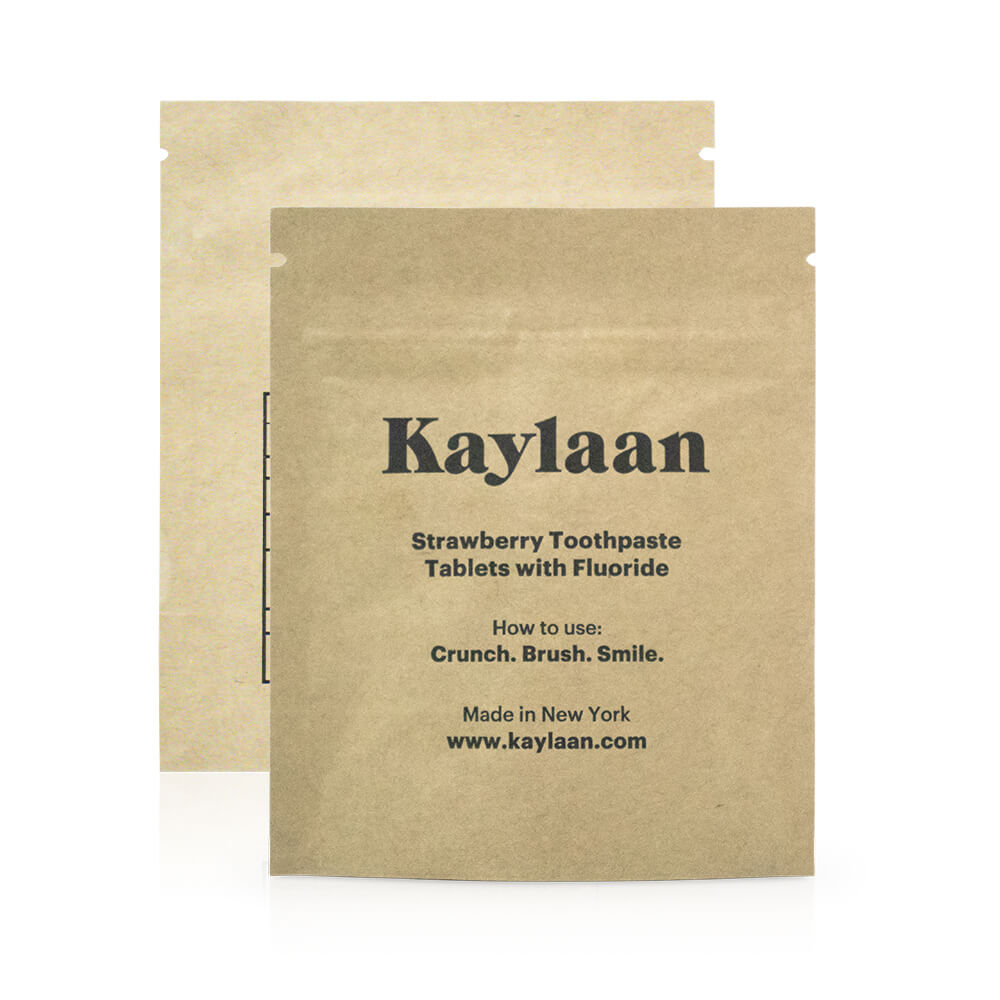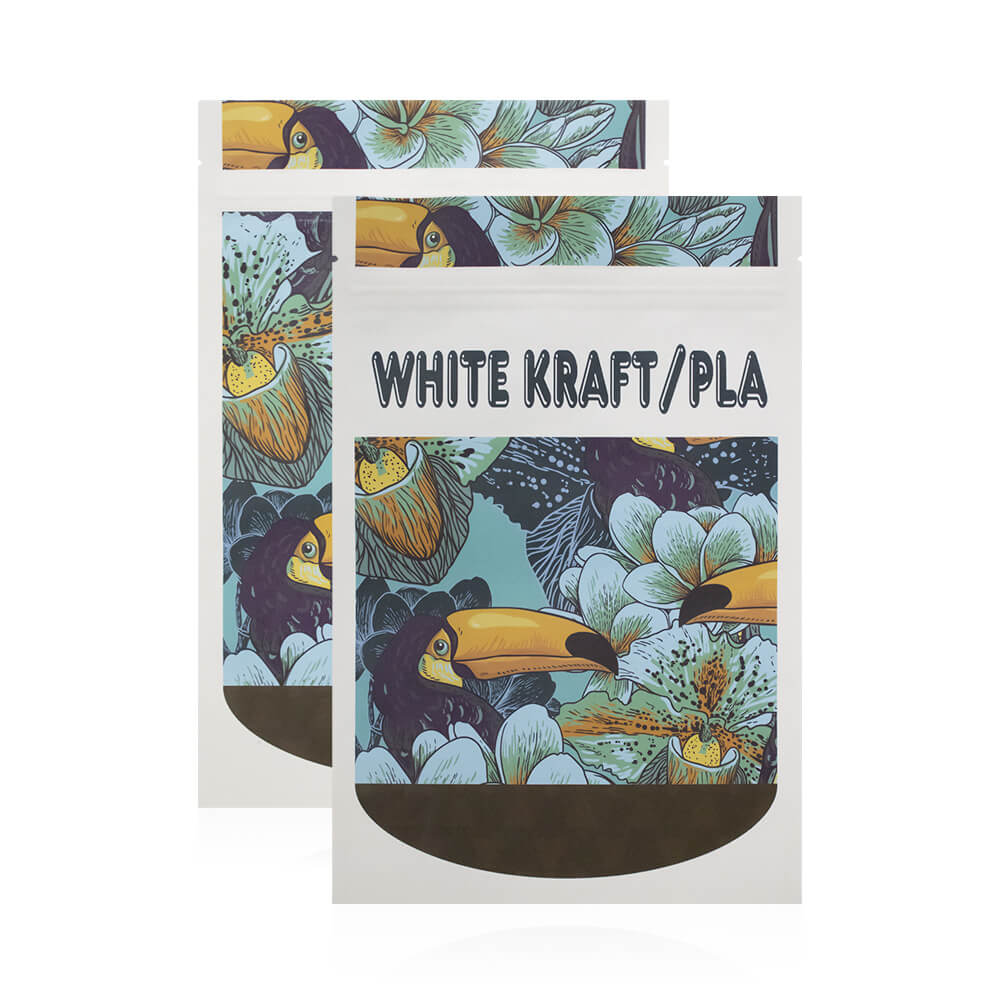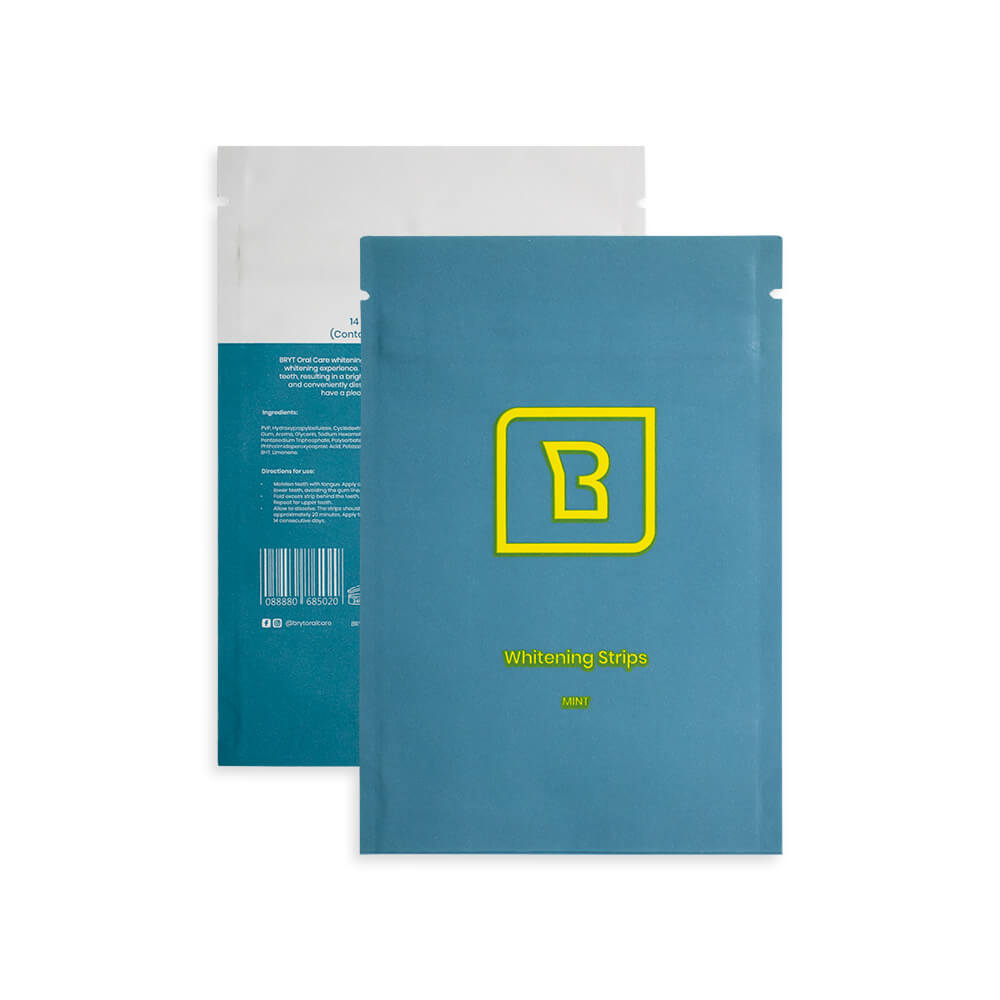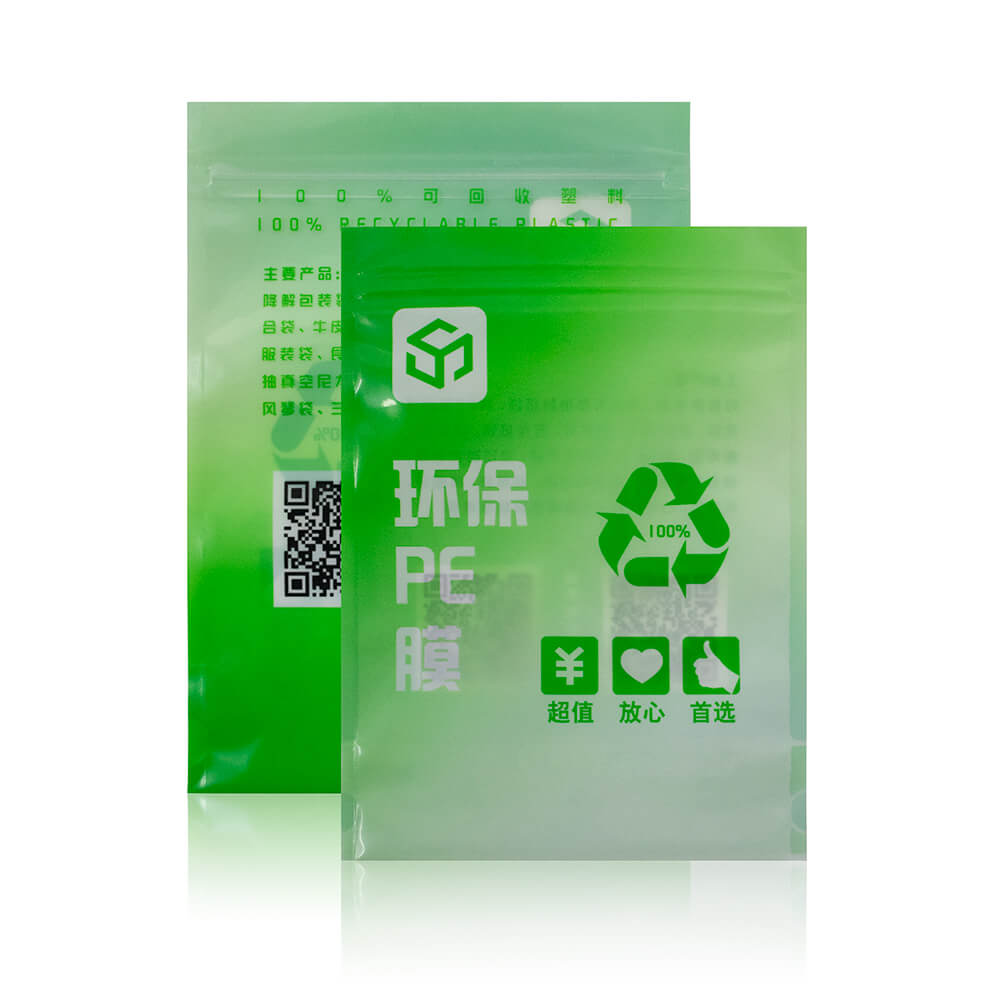Home » Bags & Pouches » Sustainable Pouches » Eco Friendly Pouches
Eco Friendly Pouches
Eco friendly pouches are eco-friendly creations, crafted to have a minimal footprint on the environment. Flexible packaging has inherent sustainability features that make it a great choice for customers interested in improving their environmental impact.
Please note that we have a MOQ for our pouch. For pouches in stock, the MOQ is 500 pcs. For customized pouches, please see the MOQ as followed:
1, Digital Printing — 500 pcs
2, Gravure Printing — 5,000pcs
Rinpac assists you throughout your project: bag shape, material, thickness, capacity and printing options. Please contact us or mark your requirements on the inquiry quotation.
Order single or thousands of items at a time. Our warehouse and flexible shipping options are available for last-minute, deadline critical orders.
- Free Sample
*Customization is always available, please mark down your need in cart or just contact us.
Specification
| Features | High-barrier films Photo-quality images Glossy or matte finishes Transparent + clouded windows Puncture and tear-resistant Press-to-close zippers |
| Material | Biodegradable material |
| Thickness | Per the customer’s request |
| Feature | High barrier, moisture-proof, biodegradable |
| OEM | Yes |
| MOQ | 500 PCS |
| Custom Order | Accept |
Video
Request A Quote
Need something helped in a short time? We’ve got a plan for you.
Introduction to Eco-Friendly Pouches
In the world of packaging, sustainability is no longer just a buzzword; it’s a necessity. As consumer awareness grows regarding environmental issues, there’s a pressing demand for eco-friendly alternatives across various industries. One such innovation making waves in the packaging realm is eco-friendly pouches. But what exactly are they, and why are they gaining so much traction? Let’s delve into the intricacies of eco-friendly pouches and explore their significance in the current landscape of packaging solutions.
What are Eco-Friendly Pouches?
Eco-friendly pouches, also known as sustainable pouches, are packaging solutions designed with the environment in mind. Unlike traditional packaging materials that contribute to pollution and waste accumulation, eco-friendly pouches prioritize sustainability throughout their lifecycle. These pouches are typically made from biodegradable or recyclable materials, such as compostable films or renewable resources like plant-based polymers.
The manufacturing process of eco-friendly pouches emphasizes energy efficiency and minimizes carbon emissions, further reducing their environmental footprint. Additionally, many eco-friendly pouches incorporate innovative features like reusable designs or water-based inks, enhancing their eco-conscious credentials.
The Importance of Eco-Friendly Packaging
Environmental Preservation
In a world grappling with climate change and environmental degradation, the significance of eco-friendly packaging cannot be overstated. Conventional packaging materials, such as plastics and foils, contribute to landfill pollution and harm delicate ecosystems. By opting for eco-friendly pouches, businesses can play a vital role in conserving natural resources and mitigating environmental damage.
Consumer Preference
Today’s consumers are increasingly inclined towards sustainable products and ethical brands. Studies indicate that a significant portion of shoppers prioritize environmental considerations when making purchasing decisions. By adopting eco-friendly packaging, businesses can align with consumer values and enhance brand reputation, fostering loyalty and trust among environmentally conscious customers.
Regulatory Compliance
Governments worldwide are implementing stringent regulations to curb pollution and promote sustainability. From plastic bans to carbon taxes, businesses face increasing pressure to adopt environmentally friendly practices. Embracing eco-friendly packaging not only ensures compliance with existing regulations but also future-proofs businesses against evolving environmental legislation.
Advantages of Eco-Friendly Pouches
Reduced Environmental Impact
Unlike traditional packaging materials that linger in landfills for centuries, eco-friendly pouches degrade naturally, minimizing harm to the environment. By choosing sustainable packaging solutions, businesses can significantly reduce their carbon footprint and contribute to global conservation efforts.
Cost Efficiency
While the initial investment in eco-friendly pouches may seem higher than traditional alternatives, the long-term benefits outweigh the costs. Reduced waste disposal expenses, potential tax incentives for sustainable practices, and enhanced brand reputation translate into substantial cost savings for businesses in the long run.
Brand Differentiation
In a competitive market, standing out from the crowd is paramount. Eco-friendly packaging serves as a unique selling proposition (USP) that sets brands apart from their counterparts. By embracing sustainability, businesses can attract environmentally conscious consumers and carve a niche for themselves in their respective industries.
Types of Eco-Friendly Pouches
In the realm of eco-friendly packaging, there’s a diverse range of options available to cater to different needs and preferences. Let’s explore some of the most common types of eco-friendly pouches:
Biodegradable Pouches
Biodegradable pouches are designed to break down naturally over time, returning to the environment without leaving behind harmful residues. These pouches are typically made from organic materials such as plant-based polymers or biodegradable plastics derived from renewable resources like cornstarch or sugarcane. As they decompose, biodegradable pouches release nutrients back into the soil, contributing to ecosystem health.
Compostable Pouches
Compostable pouches go a step further than biodegradable ones by not only breaking down but also turning into nutrient-rich compost under the right conditions. Made from biodegradable materials like compostable films or bio-based polymers, these pouches degrade efficiently in composting facilities, leaving behind no toxic residues. Compostable pouches offer a closed-loop solution, where they can be returned to the earth as valuable soil amendment, promoting circularity and sustainability.
Recyclable Pouches
Recyclable pouches are designed to be collected, processed, and remanufactured into new products, thus extending their lifecycle and reducing waste. These pouches are typically made from recyclable materials such as polyethylene terephthalate (PET) or high-density polyethylene (HDPE), which are widely accepted by recycling facilities. By choosing recyclable pouches, businesses can support the circular economy and minimize the consumption of virgin materials, conserving natural resources and reducing environmental impact.
Each type of eco-friendly pouch offers unique benefits and applications, catering to various industries and packaging requirements. Whether it’s biodegradability, compostability, or recyclability, businesses can find a sustainable packaging solution that aligns with their values and environmental objectives.
Materials Used in Eco-Friendly Pouches
Eco-friendly pouches are revolutionizing the packaging industry by offering sustainable alternatives to traditional materials. These pouches are crafted from a variety of environmentally friendly materials, each with its own unique properties and benefits. Let’s explore some of the most commonly used materials in eco-friendly pouches:
Paper-Based Materials
Paper-based materials are a popular choice for eco-friendly pouches due to their versatility, recyclability, and biodegradability. These materials are derived from responsibly sourced wood pulp or recycled paper fibers, making them renewable and environmentally sustainable. Paper-based pouches offer excellent printability, allowing for vibrant designs and branding opportunities. Additionally, they provide good barrier properties, protecting contents from moisture, light, and oxygen. From kraft paper to cardboard, paper-based materials offer a wide range of options for eco-conscious packaging solutions.
Plant-Based Materials
Plant-based materials, also known as bio-based or bioplastic materials, are derived from renewable resources such as corn, sugarcane, or potato starch. These materials can be processed into biopolymers, which exhibit similar properties to traditional plastics but are biodegradable or compostable. Plant-based pouches offer a sustainable alternative to petroleum-based plastics, reducing dependence on fossil fuels and mitigating environmental impact. With advancements in biotechnology, plant-based materials continue to evolve, offering enhanced performance and compatibility with existing packaging processes.
Recycled Materials
Recycled materials play a crucial role in eco-friendly pouches, enabling the reuse of post-consumer or post-industrial waste to create new packaging solutions. These materials can include recycled plastics, such as PET or HDPE, as well as recycled paper or cardboard fibers. By incorporating recycled materials into pouch manufacturing, businesses can divert waste from landfills, conserve natural resources, and reduce carbon emissions associated with virgin material production. Recycled pouches offer similar performance and functionality to their non-recycled counterparts, making them a sustainable choice for various packaging applications.
By leveraging paper-based, plant-based, and recycled materials, eco-friendly pouches offer a holistic approach to sustainable packaging, addressing environmental concerns while meeting consumer demands for quality and convenience. As the push for sustainability continues to gain momentum, the adoption of eco-friendly materials in pouch manufacturing is poised to accelerate, driving positive change across the packaging industry.
Advantages of Eco-Friendly Pouches
Eco-friendly pouches offer a multitude of advantages that extend beyond traditional packaging solutions. From environmental preservation to consumer appeal and cost-effectiveness, these sustainable packaging options are reshaping the industry landscape. Let’s delve into the key advantages of eco-friendly pouches:
Environmental Benefits
Perhaps the most significant advantage of eco-friendly pouches is their positive impact on the environment. By utilizing materials that are biodegradable, compostable, or recycled, these pouches minimize harm to ecosystems and reduce pollution. Unlike traditional plastics that persist in landfills for centuries, eco-friendly pouches break down naturally, returning valuable nutrients to the soil and reducing the burden on waste management systems. Additionally, the production of eco-friendly pouches often involves lower carbon emissions and energy consumption, further mitigating environmental impact and contributing to global sustainability efforts.
Consumer Appeal
In today’s marketplace, consumers are increasingly conscious of environmental issues and seek out products that align with their values. Eco-friendly pouches resonate with environmentally aware consumers, demonstrating a commitment to sustainability and responsible stewardship. Brands that embrace eco-friendly packaging can attract a loyal customer base, enhance brand reputation, and differentiate themselves in a crowded market. By prioritizing eco-consciousness, businesses can foster trust and loyalty among consumers who prioritize sustainability in their purchasing decisions, driving long-term growth and success.
Cost-Effectiveness
Contrary to common misconceptions, eco-friendly pouches can offer significant cost savings over their conventional counterparts. While the initial investment in sustainable materials may be slightly higher, the long-term benefits outweigh the upfront costs. Reduced waste disposal expenses, potential tax incentives for sustainable practices, and operational efficiencies can lead to substantial cost savings for businesses. Additionally, eco-friendly packaging solutions often enhance brand perception and customer loyalty, resulting in increased sales and revenue opportunities. By embracing eco-friendly pouches, businesses can achieve a balance between environmental responsibility and financial viability, positioning themselves for long-term success in a rapidly evolving market.
Applications of Eco-Friendly Pouches
Eco-friendly pouches are versatile packaging solutions that find applications across various industries, offering sustainable alternatives to traditional packaging materials. Let’s explore some of the key applications of eco-friendly pouches:
Food Packaging
In the realm of food packaging, eco-friendly pouches are gaining traction as consumers demand more sustainable options. These pouches are ideal for packaging a wide range of food products, including snacks, grains, dried fruits, and beverages. Made from materials such as paper, compostable films, or bio-based polymers, eco-friendly pouches help preserve food freshness while reducing environmental impact. Their lightweight and flexible nature make them convenient for both consumers and manufacturers, facilitating efficient storage, transportation, and display. Whether it’s resealable stand-up pouches or flat-bottom bags, eco-friendly packaging solutions offer a greener alternative for the food industry, promoting sustainability throughout the supply chain.
Cosmetic Packaging
The cosmetic industry is increasingly turning to eco-friendly pouches to meet consumer demand for sustainable beauty products. These pouches are well-suited for packaging cosmetics such as creams, lotions, serums, and powders. Crafted from materials like recycled plastics, biodegradable films, or plant-based polymers, eco-friendly pouches offer a stylish and eco-conscious packaging solution. With customizable shapes, sizes, and closures, brands can create distinctive packaging designs that reflect their commitment to sustainability and appeal to environmentally conscious consumers. From refillable pouches to compostable sachets, eco-friendly packaging options empower cosmetic companies to reduce their environmental footprint while enhancing brand image and consumer loyalty.
Pharmaceutical Packaging
Eco-friendly pouches are also making inroads into the pharmaceutical industry, where safety, durability, and sustainability are paramount. These pouches are suitable for packaging a variety of pharmaceutical products, including tablets, capsules, powders, and liquids. Constructed from materials such as recycled plastics, compostable films, or barrier paper, eco-friendly pouches offer reliable protection against moisture, light, and contamination. Their lightweight and compact design optimize storage space and facilitate easy dispensing and administration. Additionally, eco-friendly packaging solutions can help pharmaceutical companies meet regulatory requirements and corporate sustainability goals, enhancing their reputation and market competitiveness.
From food and cosmetics to pharmaceuticals, eco-friendly pouches offer versatile and sustainable packaging solutions that meet the evolving needs of consumers and industries alike. By embracing eco-consciousness and innovation, businesses can reduce their environmental footprint while delivering quality products and fostering a more sustainable future.
Challenges and Limitations of Eco-Friendly Pouches
While eco-friendly pouches offer numerous benefits and applications, they also come with certain challenges and limitations that need to be addressed. Let’s explore some of the key challenges associated with eco-friendly pouches:
Availability of Materials
One of the primary challenges facing the widespread adoption of eco-friendly pouches is the availability of suitable materials. While there’s a growing demand for sustainable packaging options, the supply of eco-friendly materials may not always meet industry requirements or standards. Limited availability of raw materials, inconsistent quality, and variability in supply chains can pose challenges for manufacturers seeking to scale production of eco-friendly pouches. Additionally, sourcing sustainable materials may involve higher costs and longer lead times, impacting the overall feasibility and accessibility of eco-friendly packaging solutions.
Cost Implications
Cost is another significant consideration when it comes to eco-friendly pouches. While the long-term benefits of sustainability may outweigh initial investment costs, eco-friendly materials and manufacturing processes often come at a premium. Higher material costs, additional processing requirements, and specialized equipment can contribute to increased production expenses for eco-friendly pouches compared to conventional packaging options. As a result, businesses may face challenges in balancing the desire for sustainability with the need to remain competitive and financially viable in a dynamic marketplace.
Durability Concerns
Durability is a critical factor in packaging, especially for products that require protection during storage, transportation, and handling. Eco-friendly pouches, particularly those made from biodegradable or compostable materials, may exhibit reduced durability compared to traditional plastics. Factors such as moisture sensitivity, puncture resistance, and shelf-life stability can pose challenges for eco-friendly pouches in certain applications, leading to concerns about product integrity and consumer satisfaction. While advancements in material science and packaging technology continue to address these durability concerns, ensuring the performance and reliability of eco-friendly pouches remains a key consideration for manufacturers and end-users alike.
Despite these challenges and limitations, the growing demand for sustainable packaging solutions underscores the importance of innovation and collaboration across the packaging industry. By addressing issues related to material availability, cost implications, and durability concerns, stakeholders can overcome barriers to adoption and accelerate the transition towards a more sustainable future. Through strategic partnerships, research and development initiatives, and ongoing investment in sustainable practices, eco-friendly pouches can continue to evolve and thrive as a viable solution for environmentally conscious packaging needs.
Innovations in Eco-Friendly Packaging
As the demand for sustainable packaging solutions continues to rise, the packaging industry is witnessing a wave of innovations aimed at enhancing the eco-friendliness of packaging materials, manufacturing processes, and design concepts. Let’s explore some of the latest innovations driving the evolution of eco-friendly packaging:
Advanced Materials
One of the most significant areas of innovation in eco-friendly packaging is the development of advanced materials that offer improved sustainability and performance. Researchers and manufacturers are exploring novel materials derived from renewable resources, such as algae-based polymers, mushroom mycelium, and bioplastics made from agricultural waste. These materials offer biodegradability, compostability, and reduced environmental impact compared to conventional plastics. Furthermore, advancements in nanotechnology are enabling the creation of bio-based coatings and barrier films that enhance the shelf-life and functionality of eco-friendly packaging, opening up new possibilities for applications in food, cosmetics, and pharmaceuticals.
Sustainable Manufacturing Processes
In addition to innovative materials, sustainable manufacturing processes play a crucial role in eco-friendly packaging innovation. Companies are adopting closed-loop systems, zero-waste manufacturing, and energy-efficient production techniques to minimize environmental impact and resource consumption. Technologies such as 3D printing, digital printing, and flexographic printing enable precise control over material usage and reduce ink waste, while water-based adhesives and solvent-free lamination eliminate the need for harmful chemicals. By optimizing resource utilization and reducing emissions, sustainable manufacturing processes contribute to the overall eco-friendliness of packaging solutions and support circular economy principles.
Creative Designs
Creative design concepts are driving innovation in eco-friendly packaging, offering functional and aesthetically pleasing solutions that resonate with consumers. Designers are embracing minimalist designs, modular packaging, and multi-functional formats to optimize material usage and reduce waste. Flat-pack designs, foldable pouches, and stackable containers minimize packaging volume during transportation and storage, leading to lower carbon emissions and logistics costs. Moreover, smart packaging technologies incorporating QR codes, NFC tags, and edible ink enable enhanced traceability, product authentication, and interactive consumer experiences, fostering engagement and trust.
By harnessing the power of advanced materials, sustainable manufacturing processes, and creative designs, eco-friendly packaging innovations are reshaping the future of the packaging industry. These innovations not only address environmental concerns but also meet consumer expectations for convenience, functionality, and brand experience. As businesses and consumers increasingly prioritize sustainability, the pace of innovation in eco-friendly packaging is set to accelerate, driving positive change and ushering in a new era of responsible packaging solutions.
Future Trends in Eco-Friendly Packaging
The future of eco-friendly packaging is poised for significant growth and innovation, driven by expanding consumer demand, evolving regulatory landscapes, and breakthroughs in technology. Let’s explore some of the key trends shaping the future of eco-friendly packaging:
Expansion of Eco-Friendly Options
One of the most notable trends in eco-friendly packaging is the continued expansion of options available to consumers and businesses. As sustainability becomes a top priority for consumers worldwide, there’s growing demand for eco-friendly alternatives across all industries. Manufacturers are responding by developing a wider range of sustainable materials, including bio-based polymers, recycled plastics, and biodegradable substrates. Additionally, advancements in packaging design and engineering are enabling the creation of innovative solutions such as edible packaging, water-soluble films, and reusable containers, offering versatile and environmentally friendly options for packaging needs.
Regulatory Developments
Regulatory developments are playing a crucial role in shaping the future of eco-friendly packaging, with governments around the world implementing measures to reduce plastic waste and promote sustainability. From plastic bans and extended producer responsibility (EPR) laws to carbon taxes and mandatory recycling targets, regulatory frameworks are driving businesses to adopt more sustainable packaging practices. In response, companies are investing in research and development to comply with emerging regulations while innovating new solutions that exceed environmental standards. By aligning with regulatory requirements and demonstrating commitment to sustainability, businesses can enhance brand reputation and gain a competitive edge in the marketplace.
Technological Advancements
Technological advancements are driving unprecedented innovation in eco-friendly packaging, enabling the development of materials and processes that were once thought impossible. From biomimicry and nanotechnology to blockchain and artificial intelligence (AI), technology is revolutionizing every aspect of the packaging lifecycle. For instance, AI-powered algorithms can optimize packaging designs for material efficiency and performance, while blockchain technology ensures transparency and traceability throughout the supply chain. Furthermore, advancements in recycling infrastructure and closed-loop systems are making it easier to recover and reuse materials, reducing reliance on virgin resources and minimizing waste.
Tips for Choosing Eco-Friendly Pouches
Selecting the right eco-friendly pouches is essential for businesses looking to align with sustainability goals while meeting packaging needs effectively. Here are some tips to consider when choosing eco-friendly pouches:
Consider the Product
The first step in choosing eco-friendly pouches is to consider the nature of the product being packaged. Different products have varying requirements in terms of protection, shelf-life, and compatibility with packaging materials. For example, food products may require barrier properties to prevent moisture or oxygen ingress, while cosmetic products may need to maintain fragrance integrity. By understanding the specific needs of the product, businesses can select eco-friendly pouches that offer the necessary functionality without compromising product quality or safety.
Assess the Environmental Impact
When evaluating eco-friendly pouch options, it’s essential to assess the environmental impact of each material and manufacturing process. Look for pouches made from renewable resources, such as plant-based polymers or recycled materials, which minimize reliance on finite resources and reduce carbon emissions. Consider the entire lifecycle of the pouch, from raw material extraction and production to transportation, use, and disposal. Opt for materials and processes that prioritize energy efficiency, waste reduction, and recyclability or compostability, ensuring minimal environmental footprint throughout the product’s lifecycle.
Evaluate Cost-Effectiveness
While sustainability is a primary consideration, cost-effectiveness is also crucial when choosing eco-friendly pouches. Evaluate the total cost of ownership, taking into account factors such as material costs, production expenses, transportation costs, and end-of-life disposal costs. While eco-friendly materials may have a higher upfront cost compared to conventional options, they often offer long-term benefits such as reduced waste disposal fees, enhanced brand reputation, and potential savings from regulatory compliance or tax incentives. Consider the overall return on investment (ROI) of eco-friendly pouches to determine their cost-effectiveness for your business.
By considering the product, assessing the environmental impact, and evaluating cost-effectiveness, businesses can make informed decisions when choosing eco-friendly pouches. By selecting pouches that meet both sustainability and practical packaging requirements, businesses can contribute to environmental conservation while achieving their business objectives effectively.
Conclusion
In conclusion, eco-friendly pouches represent a significant advancement in the packaging industry, offering sustainable alternatives to conventional materials. With their biodegradable, compostable, or recyclable properties, eco-friendly pouches contribute to environmental conservation efforts while meeting the packaging needs of various industries, including food, cosmetics, and pharmaceuticals. From advanced materials and sustainable manufacturing processes to creative designs and future trends, the landscape of eco-friendly packaging is evolving rapidly, driven by consumer demand, regulatory developments, and technological innovations. By embracing eco-friendly pouches and adopting a holistic approach to sustainability, businesses can reduce their environmental footprint, enhance brand reputation, and drive long-term growth in a responsible and ethical manner.




